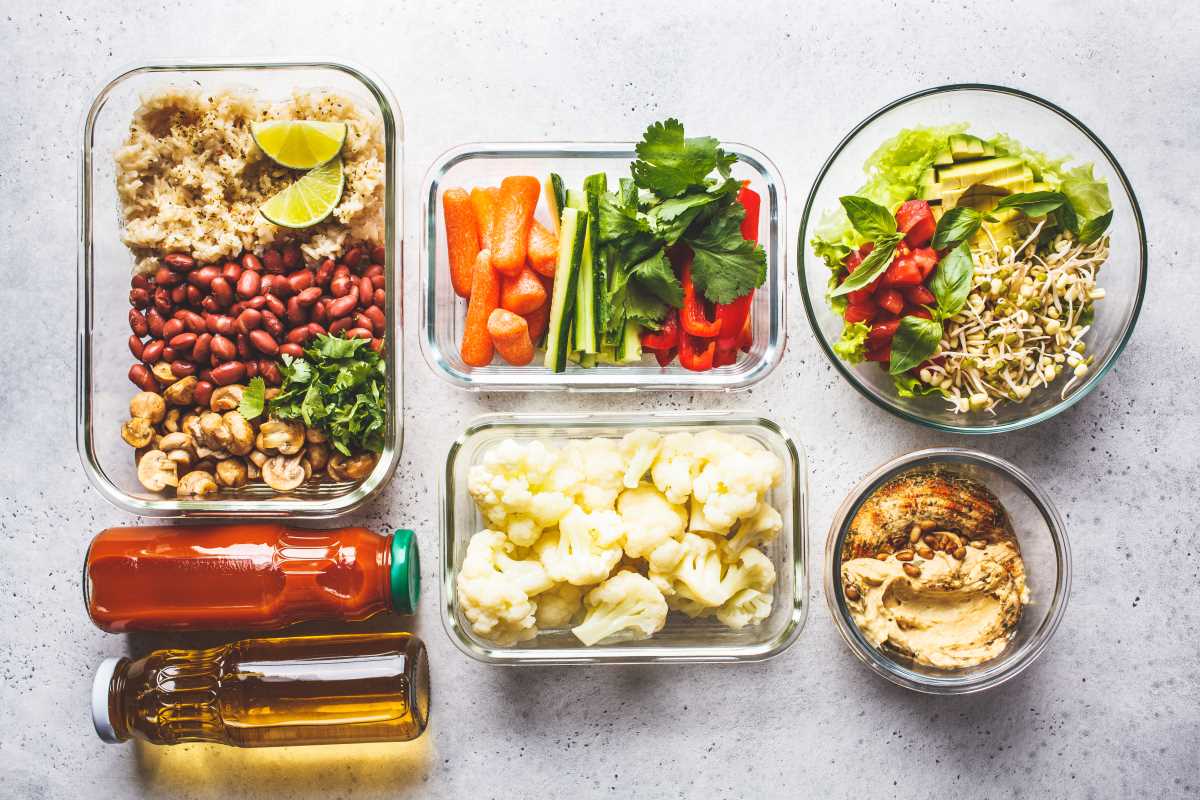Juggling meal preparation with a packed schedule can seem overwhelming, especially when emails and meetings fill every hour. People often end up skipping vegetables or choosing takeout, not realizing how small missteps—like overestimating how long food stays fresh in the freezer—add up over time. Paying attention to these everyday hurdles and using some practical, time-saving tips can help you prepare nourishing meals in less time. With a bit of planning and some simple shortcuts, you can transform long hours in the kitchen into short, productive sessions that leave you with plenty of healthy options to enjoy throughout the week.
Unexpected Time Drains in Daily Meal Preparation
- Chopping inconsistency: Spending extra minutes fussing over uneven cuts causes prolonged cooking times and uneven heat distribution. Uniform slices speed up sautéing or roasting by up to 20 percent compared with random shapes that cook unevenly.
- Cross-cleaning tools: Washing multiple knives, cutting boards, and mixing bowls after each ingredient adds up. Switching between tools for proteins, veggies, and grains often doubles cleanup time and breaks concentration.
- Ingredient hunting: Scrounging through mismatched containers and half-empty bags wastes mental energy. Locating that last teaspoon of spice can derail the entire cooking session, causing you to pause and search instead of cooking continuously.
- Intermittent reheating: Clearing space in a crowded fridge or freezer to reheat overnight containers interrupts a smooth evening routine. If you don’t designate a reheating spot, you’ll waste minutes opening drawers and rearranging items just to warm today’s lunch.
- Untracked leftovers: Forgetting what you’ve already cooked results in duplicate dishes or wasted ingredients. Without a simple logging system or visible labels, you end up repurposing the same protein three days in a row or letting veggies spoil.
Effective Ingredient Planning
- Combine aromatics: Mix garlic, ginger, and herbs into flavored oil cubes. Freeze in ice cube trays and drop a pre-measured cube directly into your skillet. This method saves cleaning three separate boards and knives, treats these flavors as one unit, and cuts chopping time by 75 percent.
- Pre-portion grains: Cook a large batch of quinoa, rice, or farro and divide it into uniform single-serve containers. You avoid repeated cooking cycles and always have a consistent base for stir-fries, bowls, or salads without standing next to a boiling pot.
- Sheet-pan seasoning stations: Line one half of a baking sheet with proteins and the other half with veggies. Pre-sprinkle each section with a dedicated spice blend. When it’s time to roast, you simply slide the entire sheet into the oven rather than sprinkling spices on separate pans.
- Uniform storage jars: Use identical glass jars for chopped vegetables and sauces. Label both the content and date with a friendly chalk marker. Stackability and clear visibility make retrieving ingredients easy, and you eliminate the panic of “What did I cut last night?”
- Bulk herb freezes: Wrap fresh herbs tightly in damp paper towels and freeze inside a sealed bag. You preserve vibrant color and flavor for weeks, and when a recipe calls for parsley or cilantro, you simply break off a small bundle instead of rinsing and drying dozens of leaves.
Practical Batch-Cooking Methods
- Protein-first Preparation
- Purpose: Guarantee a steady supply of protein for wraps, salads, and stir-fries.
- Step-by-step:
- Marinate protein in a balanced seasoning mix.
- Bake or grill at moderate heat for 20–25 minutes.
- Cool on a wire rack to avoid sogginess.
- Slice or cube into serving-sized pieces.
- Store in airtight containers.
- Cost: Minimal if you buy raw ingredients in bulk.
- Insider tip: Use a probe thermometer to pull chicken at exactly 165°F for tender results.
- Vegetable Parade Roasting
- Purpose: Offer ready-to-eat sides or mix-ins that add nutrients to any dish.
- Step-by-step:
- Preheat oven to 425°F.
- Toss carrots, broccoli, and bell peppers with oil and seasoning.
- Arrange on a single layer on large baking sheets.
- Roast for 18–22 minutes, flipping once.
- Cool and portion into individual boxes.
- Availability: Adjust veggies to whatever’s in season.
- Insider tip: Line pans with reusable silicone mats to cut down on cleanup.
- Sauce Stash Technique
- Purpose: Transform base ingredients into distinct dishes without extra effort.
- Step-by-step:
- Blend sauce ingredients in a blender.
- Pour into portioned mason jars.
- Label each jar with sauce type and date.
- Refrigerate for up to five days.
- Drizzle over bowls or use as dip.
- Metric: Yields about six servings per jar.
- Insider tip: Add a drop of honey or lemon juice for freshness right before serving.
- Grain-mix Station
- Purpose: Offer texture variation and distribute cooking times evenly when reheating.
- Step-by-step:
- Cook grains separately according to package instructions.
- Spread out on baking sheets to cool.
- Mix equal parts in a large bowl.
- Portion into containers.
- Top with sesame seeds or crushed nuts.
- Cost: Around $0.50 per cup when buying in bulk.
- Insider tip: Rinse grains thoroughly to remove bitter coatings and improve digestibility.
- Snack-plate Assembly
- Purpose: Prevent unhealthy snacking by offering a curated mini-meal.
- Step-by-step:
- Portion each item into small reusable containers.
- Add them to a divided lunch box.
- Label the set with a colored dot system.
- Refrigerate upright to prevent spills.
- Grab and go when hunger hits.
- Availability: Uses everyday ingredients.
- Insider tip: Replace crackers with sliced cucumbers for a lighter crunch.
Fast Techniques for Quick Turnarounds
When only ten minutes remain before a late meeting or lunch break, you need quick methods that still deliver flavor. Spritzing sauces, par-boiling vegetables, and using handheld tools help you keep ingredients fresh with no downtime. Use small preparation bursts during idle moments—while the kettle boils or during a quick phone call—to break large tasks into small, manageable steps.
Try adding meal prep sprints during your morning coffee wait or a TV commercial break. These small tasks accumulate and stand ready in your fridge or pantry, turning every spare moment into a cooking success.
Creative Menu Planning Ideas
- Mood board approach: Make a simple digital collage of meal ideas—images of grains, proteins, and veggies—using a free note-taking app. This visual guide encourages variety, avoids repeating the same meals all week, and simplifies grocery shopping. Updating it takes less than ten minutes and keeps your ideas fresh.
- Flavor-rotation wheel: Draw a circular planner divided into spice groups: smoky, tangy, herbal, umami, and sweet. Assign each group to specific mealtimes. This method prevents flavor fatigue, balances macros, and ensures you don’t use the same seasoning profile twice in a row.
- Swipe-right list: Create a swipeable card deck on your phone—each card shows a photo, cooking time, and three ingredients. Shuffle for surprise meal ideas or filter by available time. Flicking through cards in seconds helps you decide based on your mood or schedule.
- Community share board: Invite friends or coworkers to contribute one quick favorite dish each month to a shared online document. This collaborative effort introduces new recipes, keeps you accountable, and uses social motivation to maintain your kitchen routine.
- One-protein challenge: Pick one protein each week and plan five different ways to serve it—tacos, salads, stir-fries, wraps, and grain bowls. Focusing on one ingredient simplifies shopping, reduces spoilage, and makes sure you use every ounce of what you buy.
Smart meal planning and batch cooking save time and help you eat well without special skills. Identify delays and use simple methods to enjoy healthier, happier days. Start your routine today with personalized steps.







